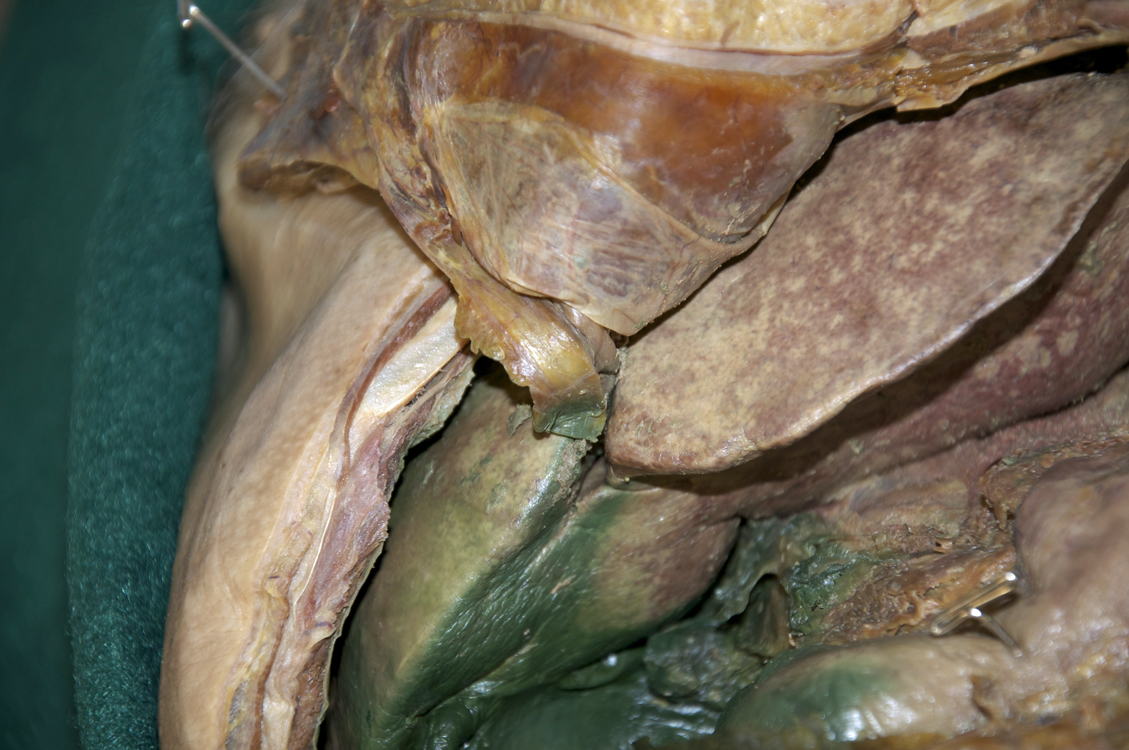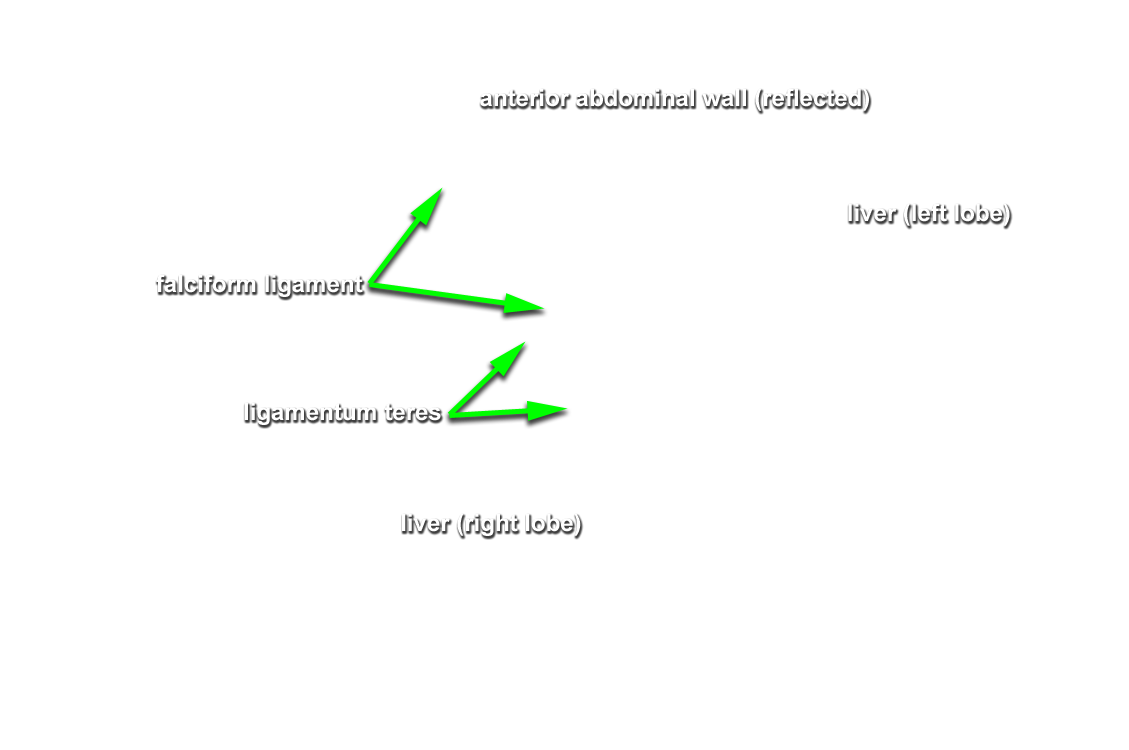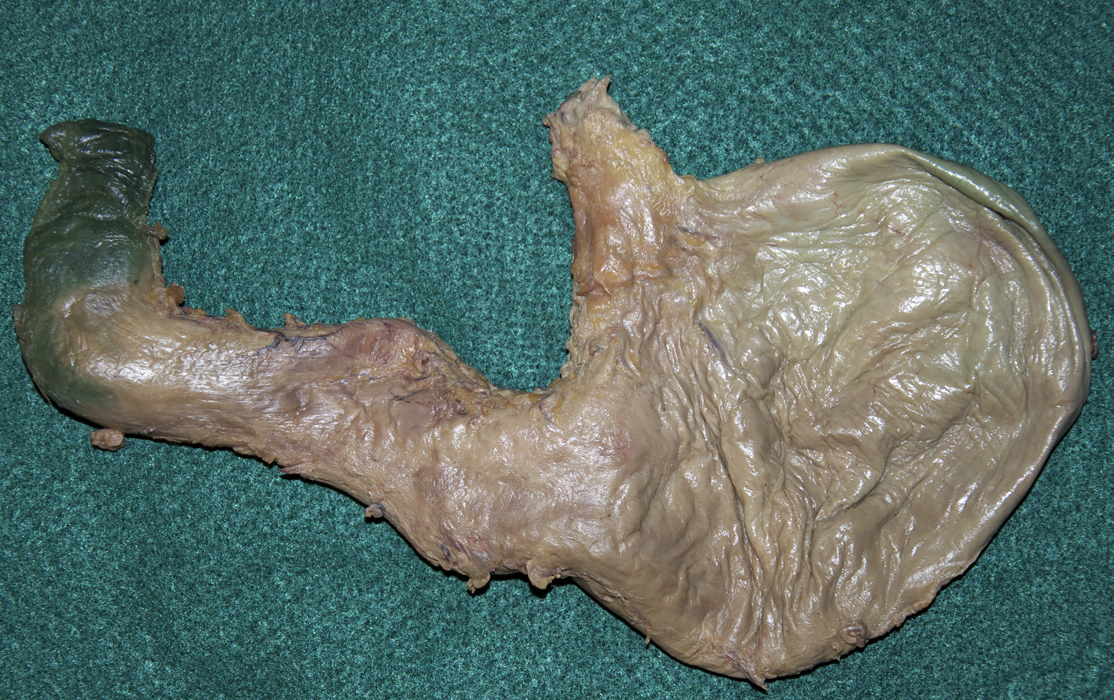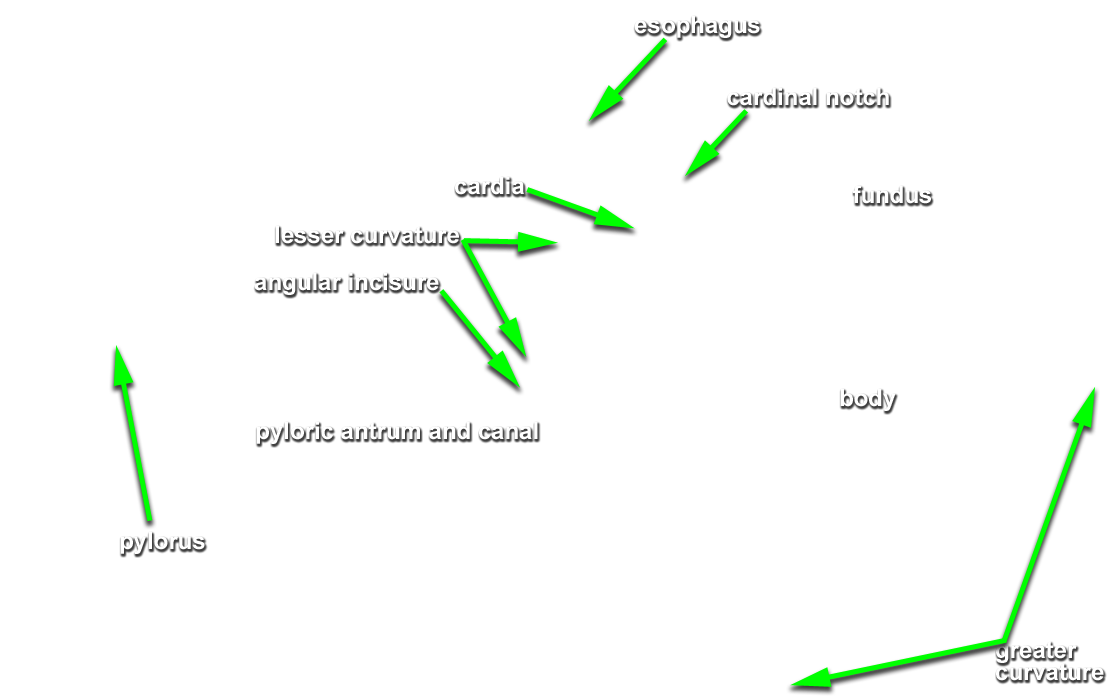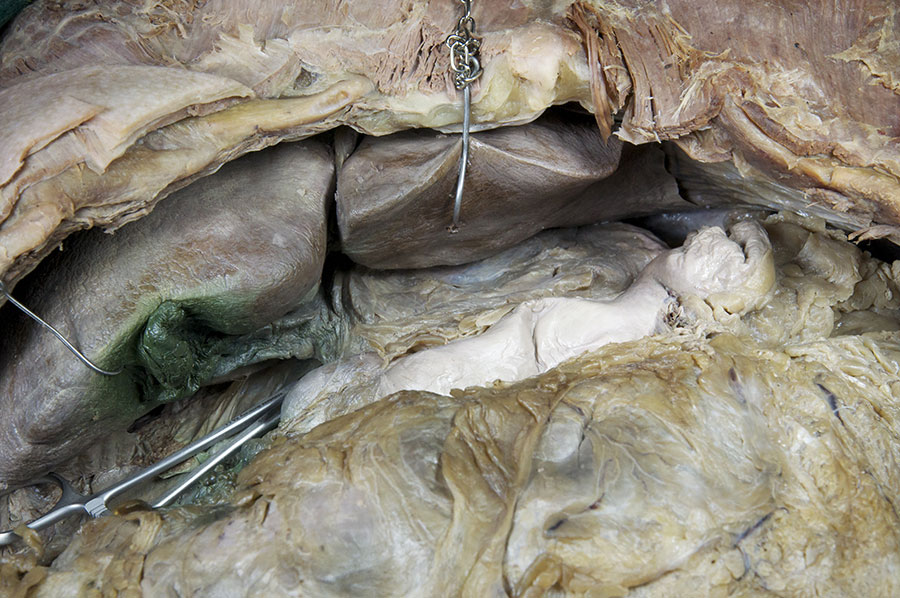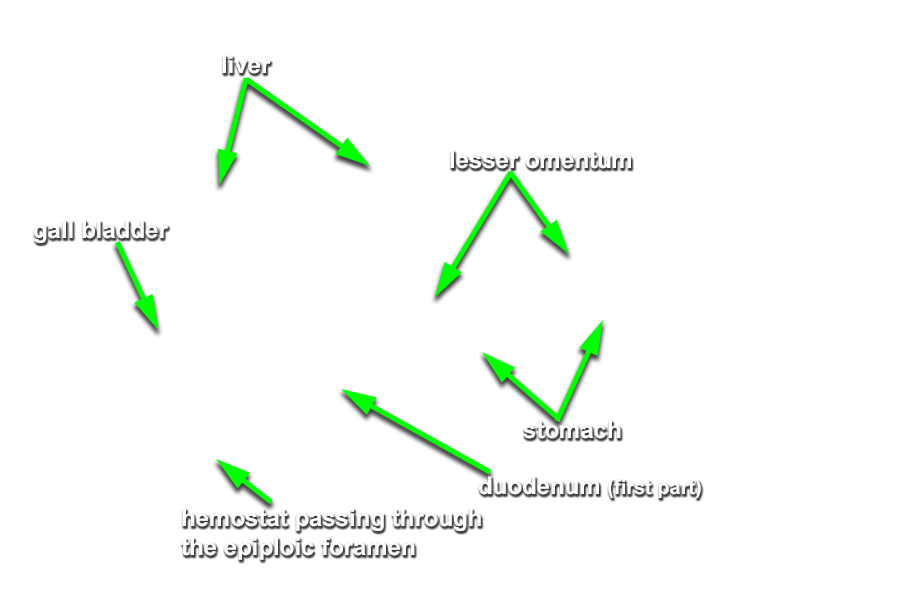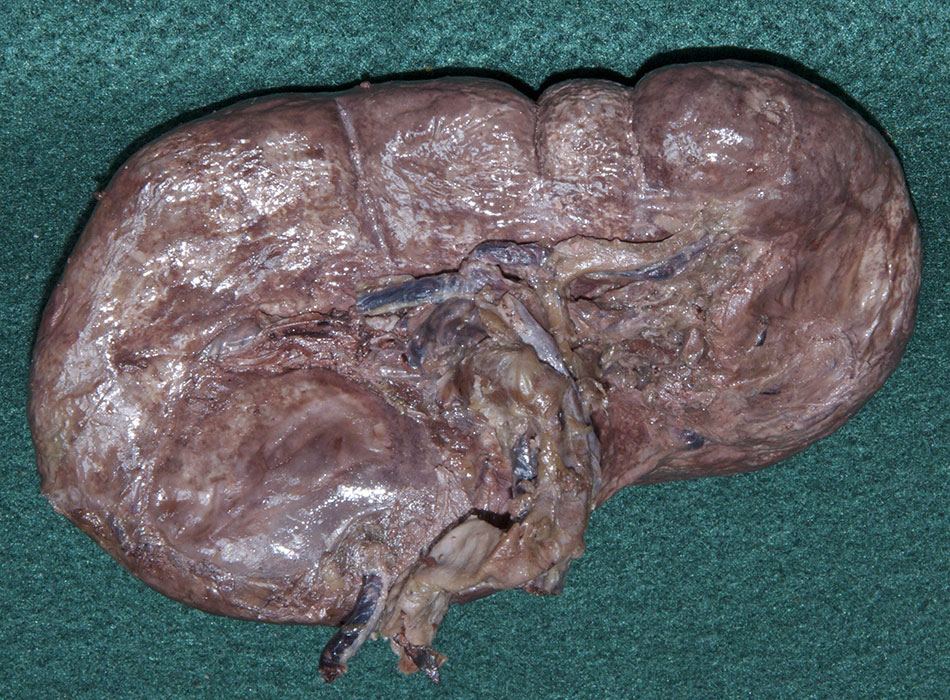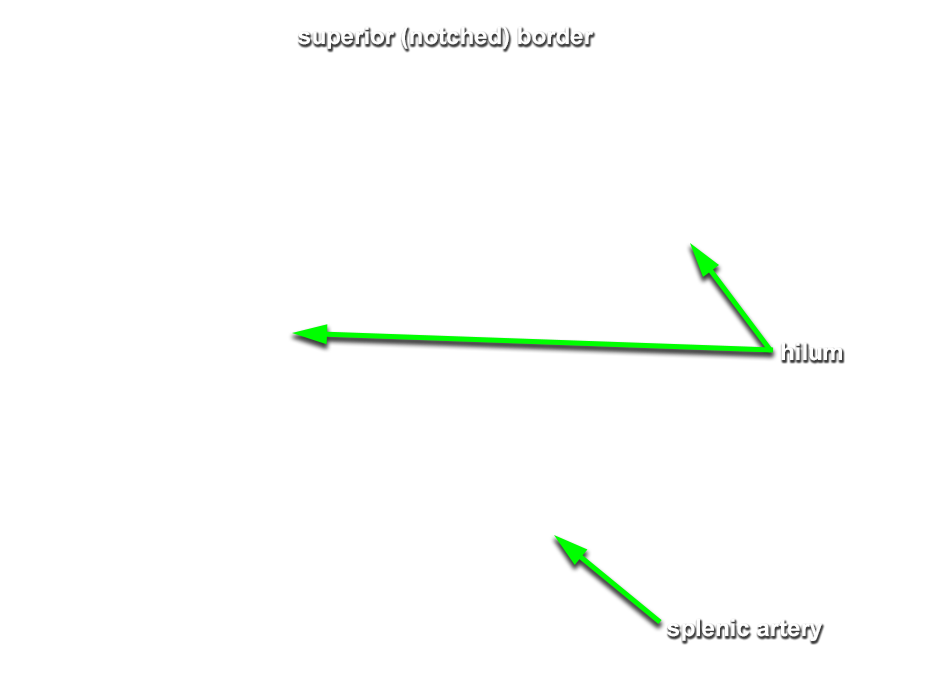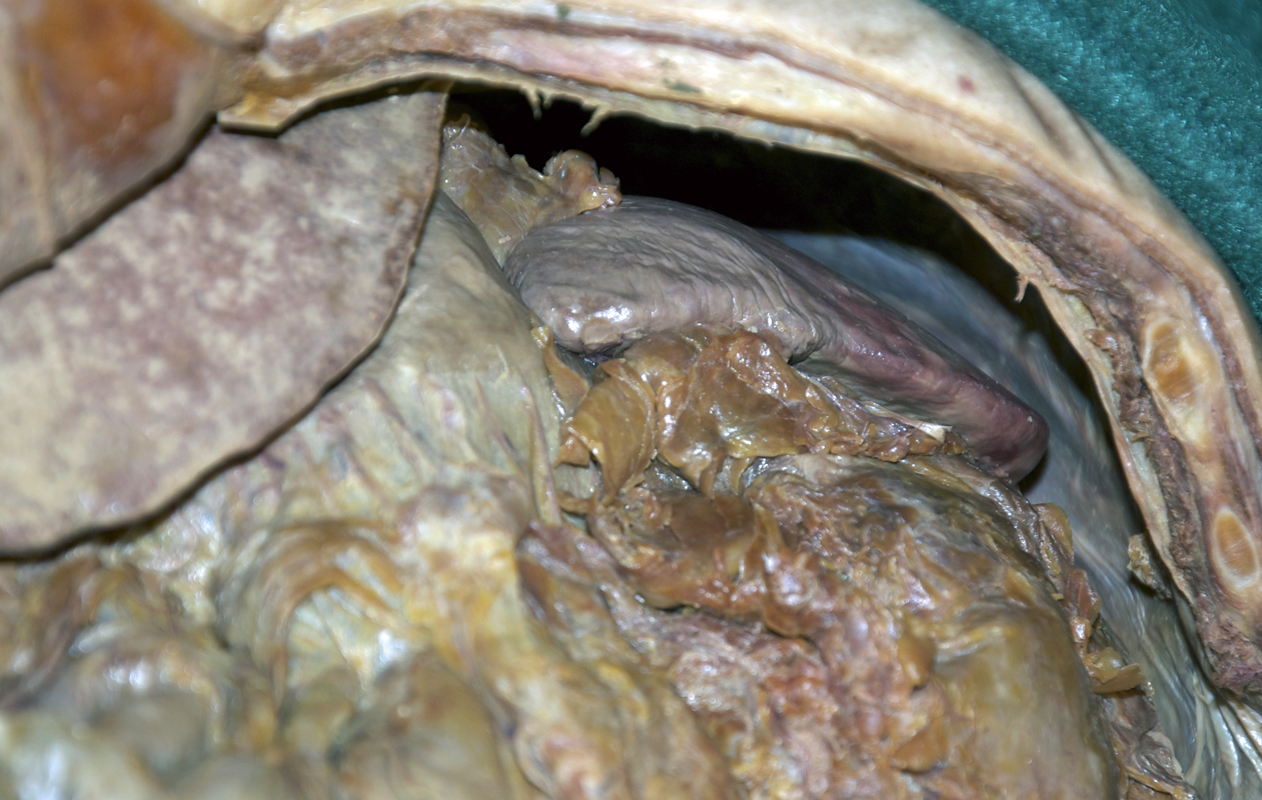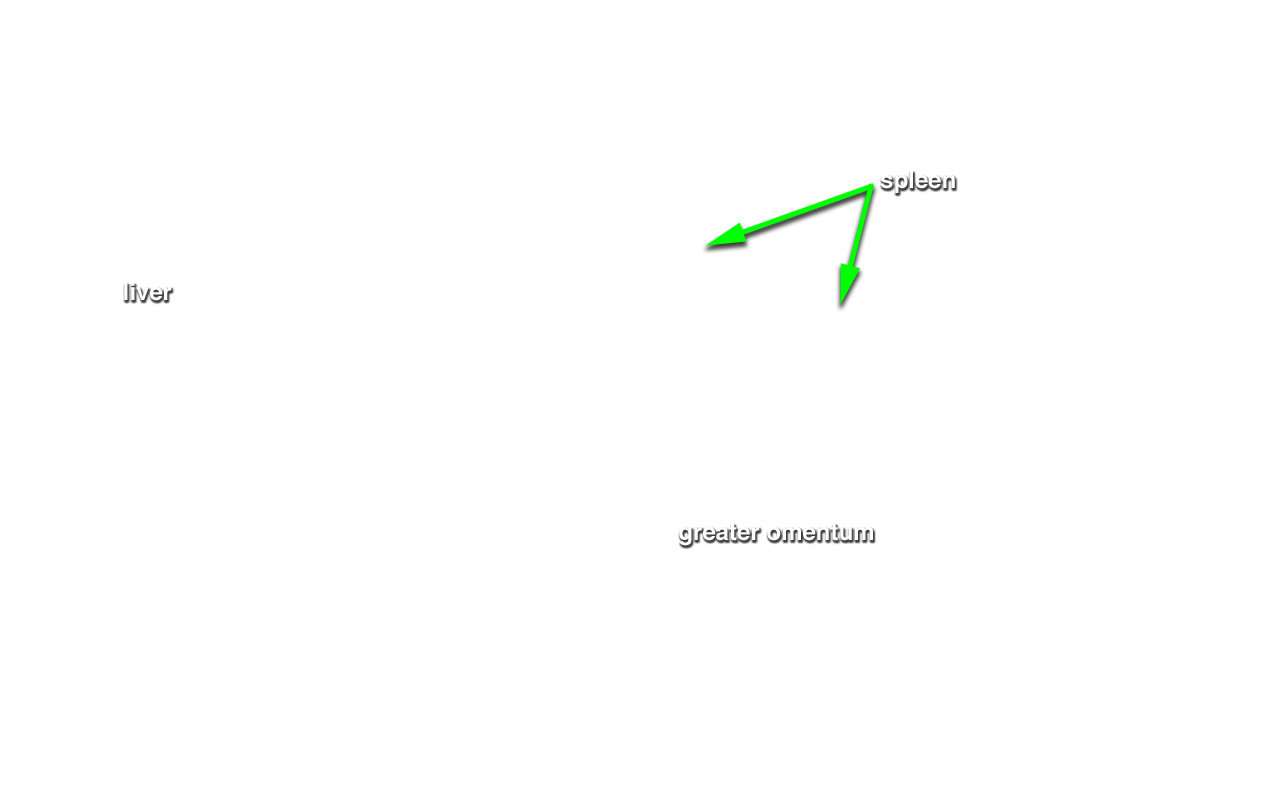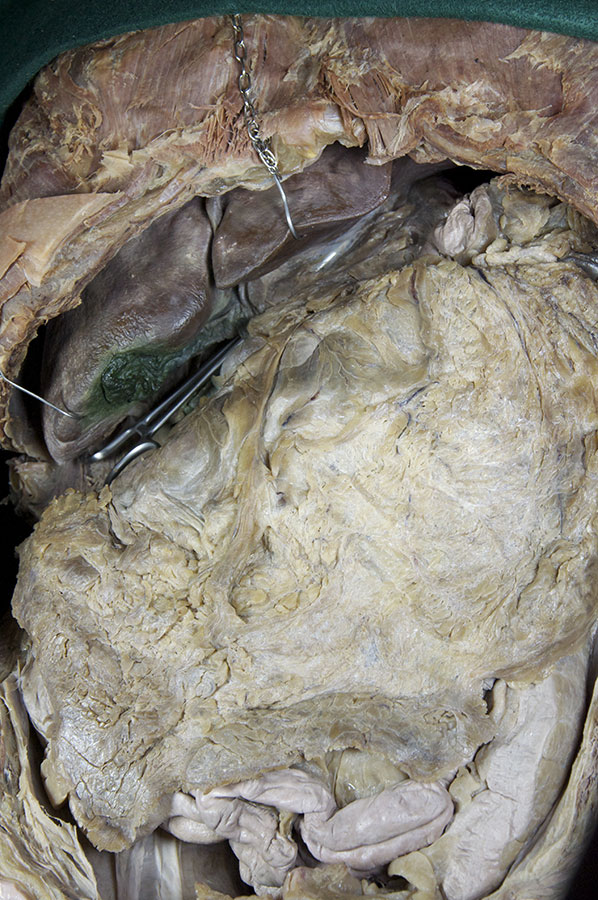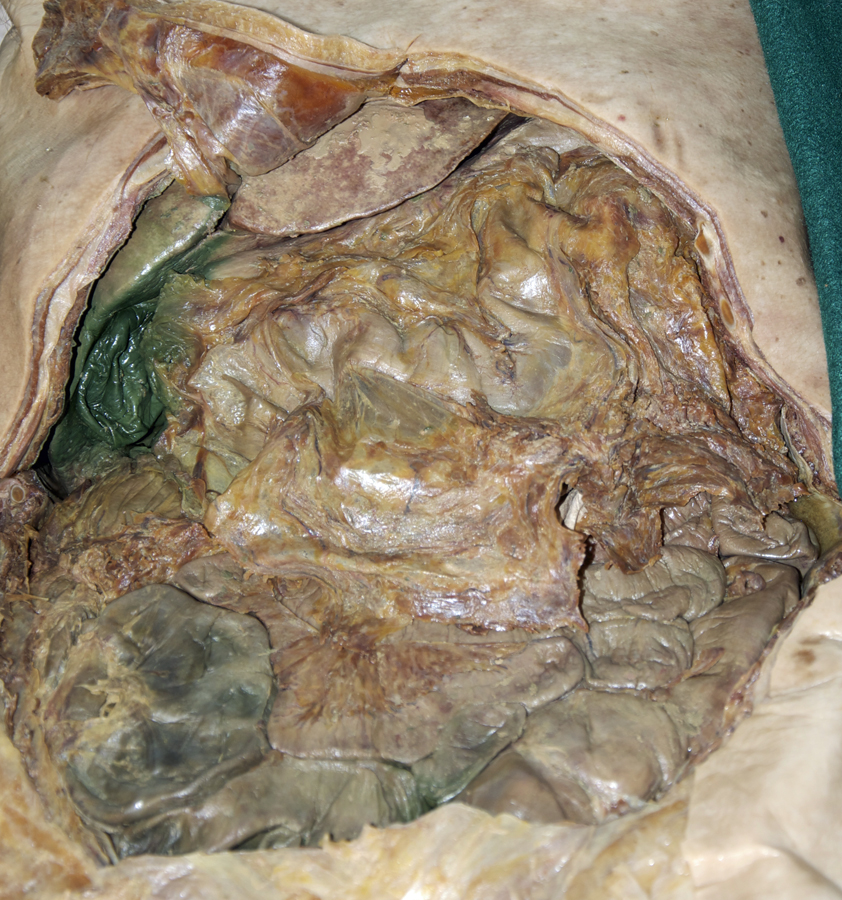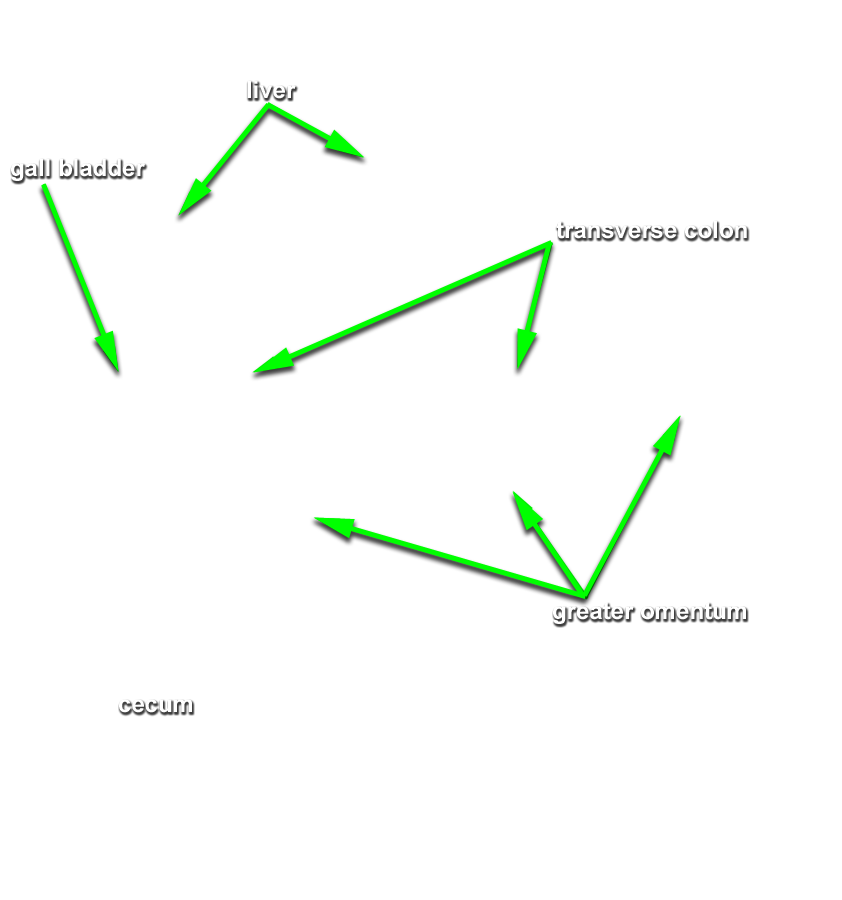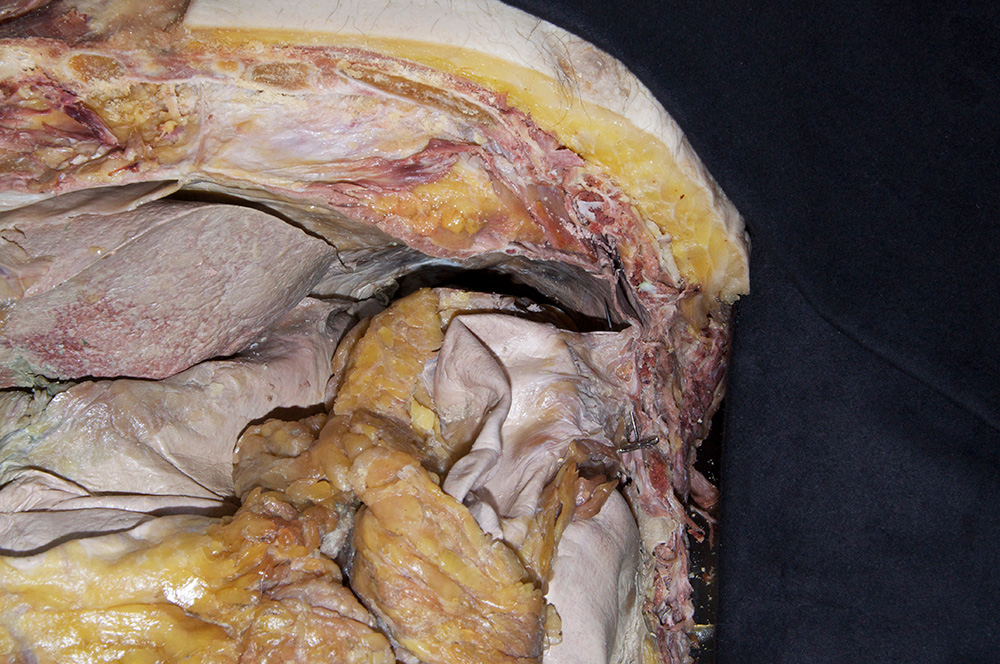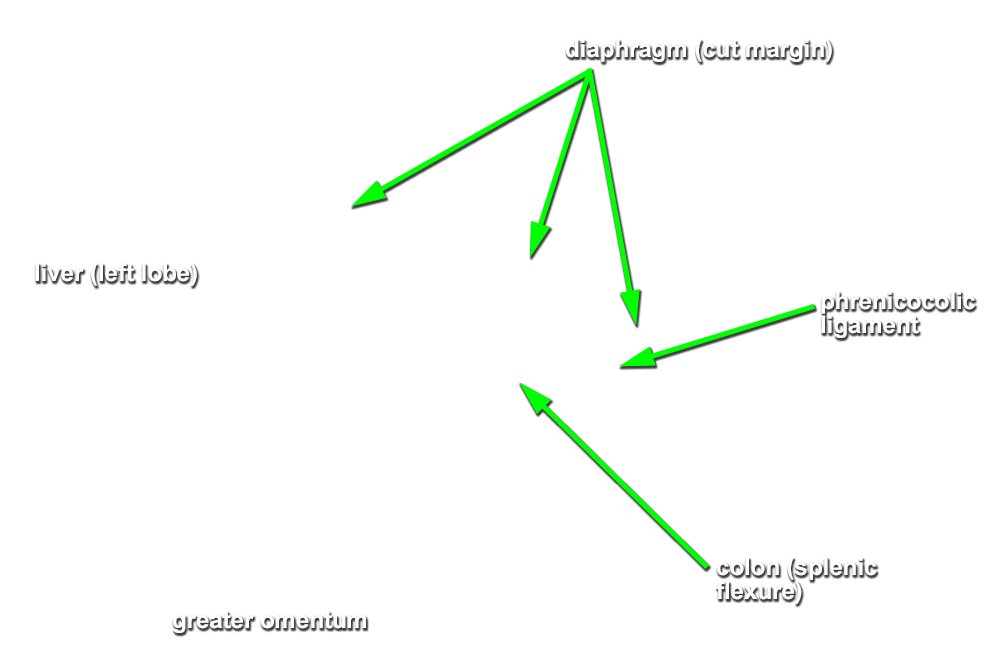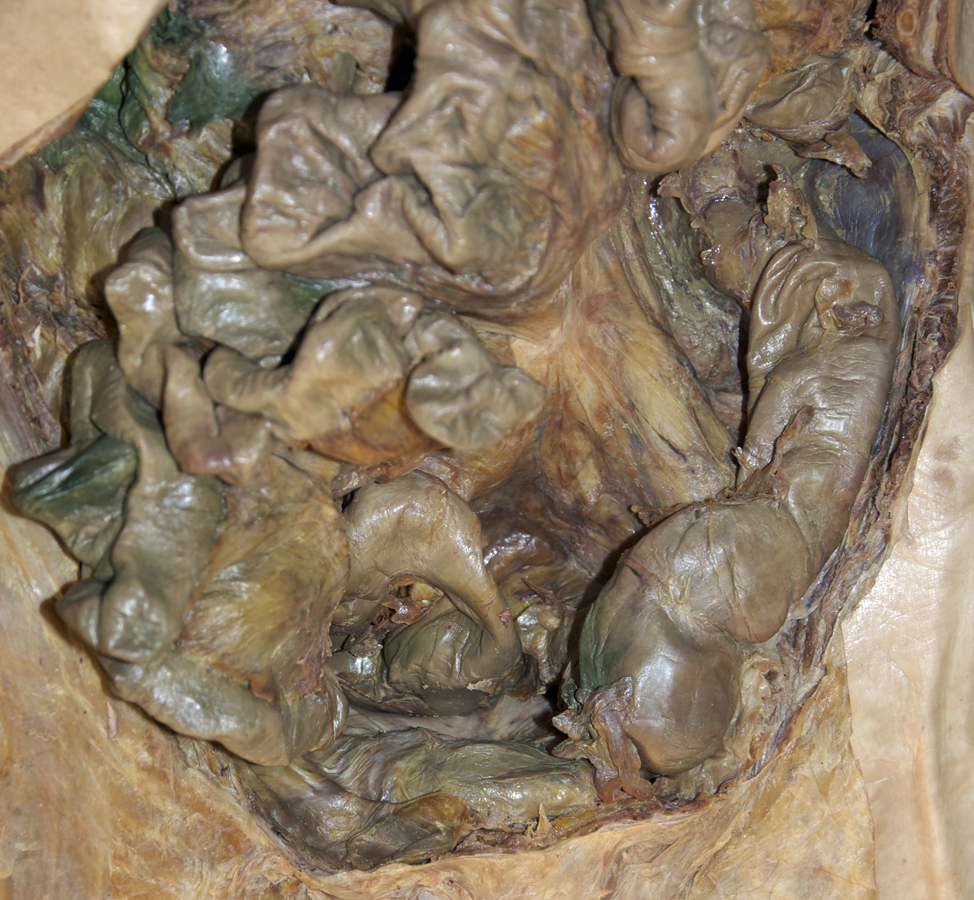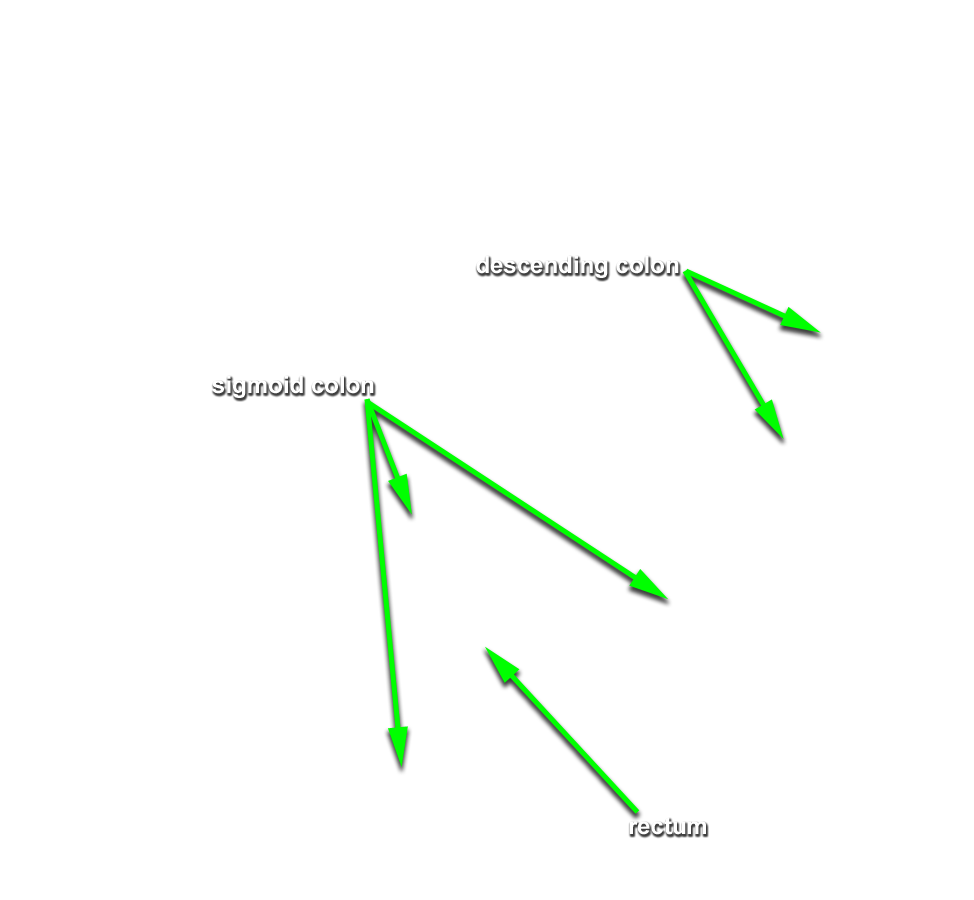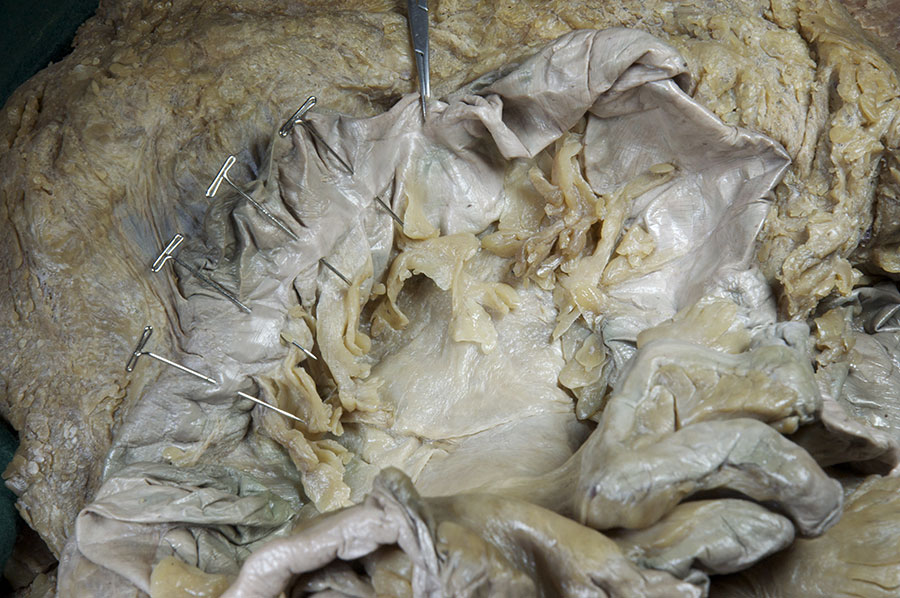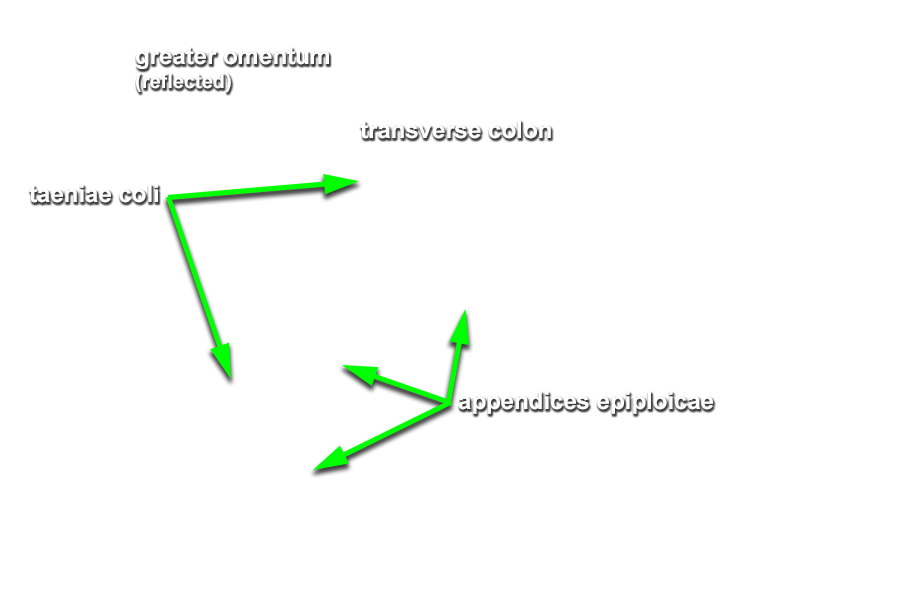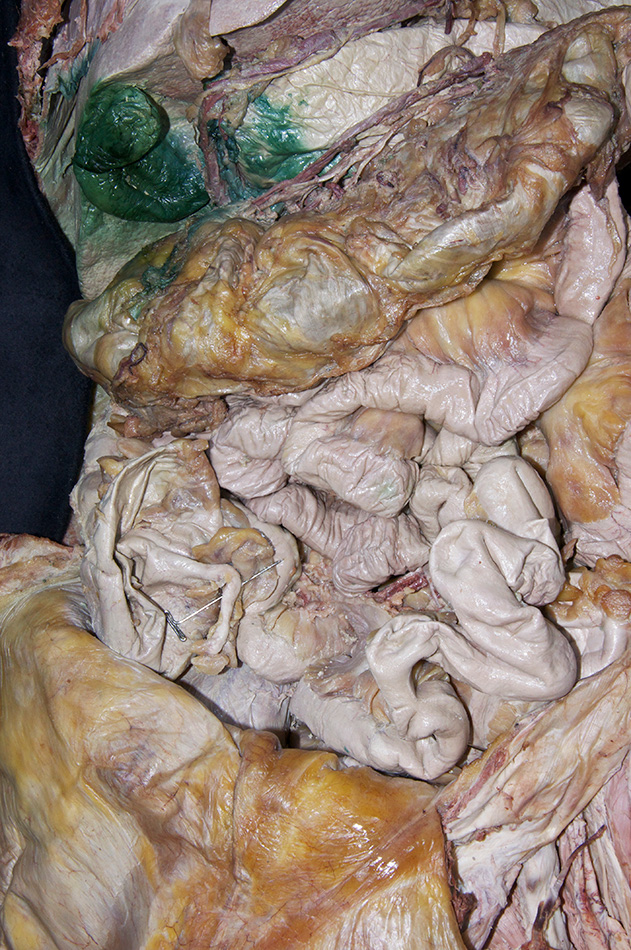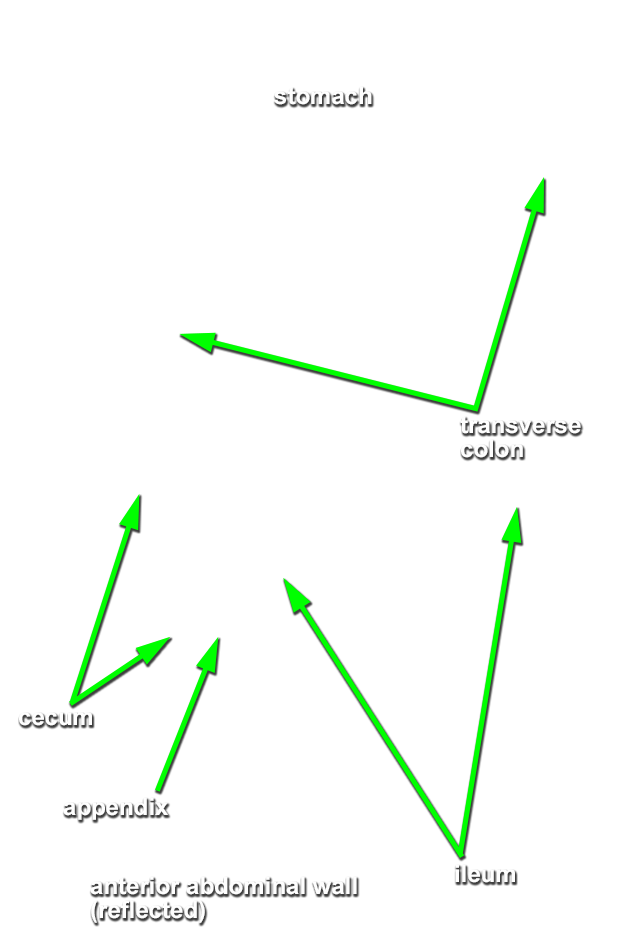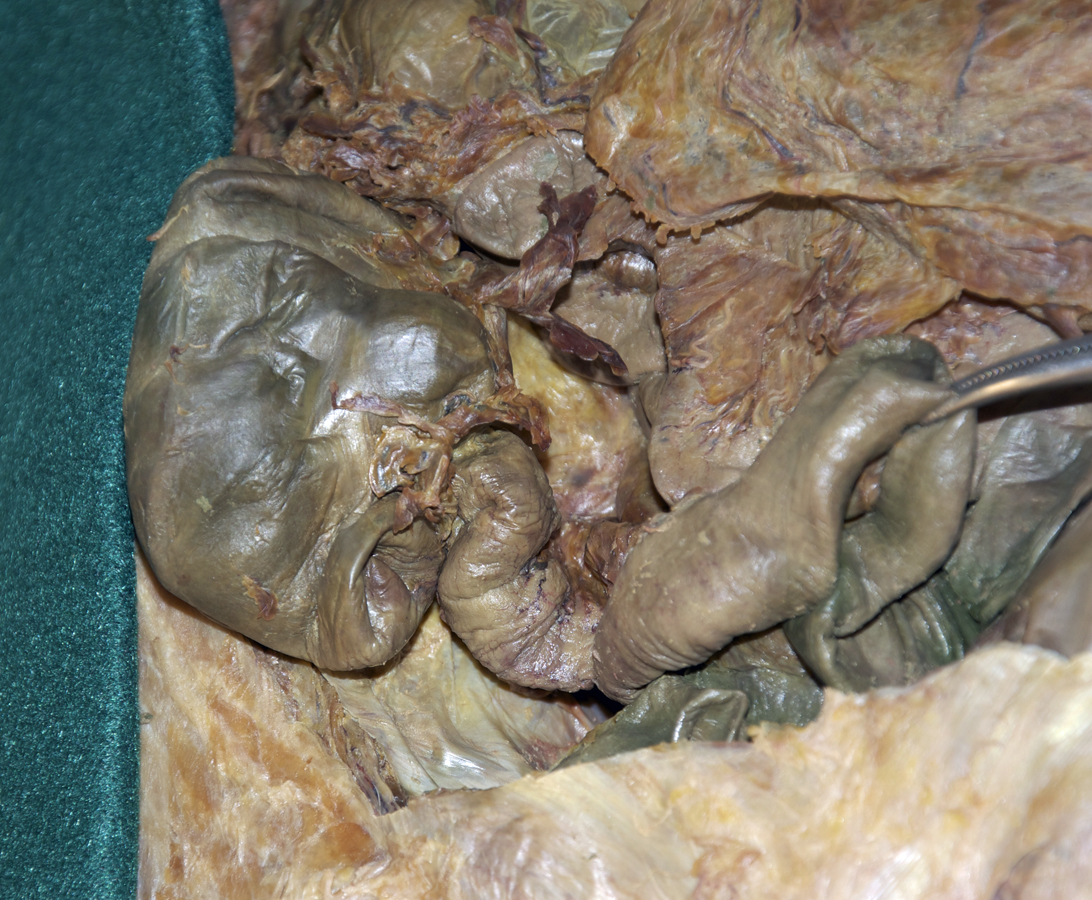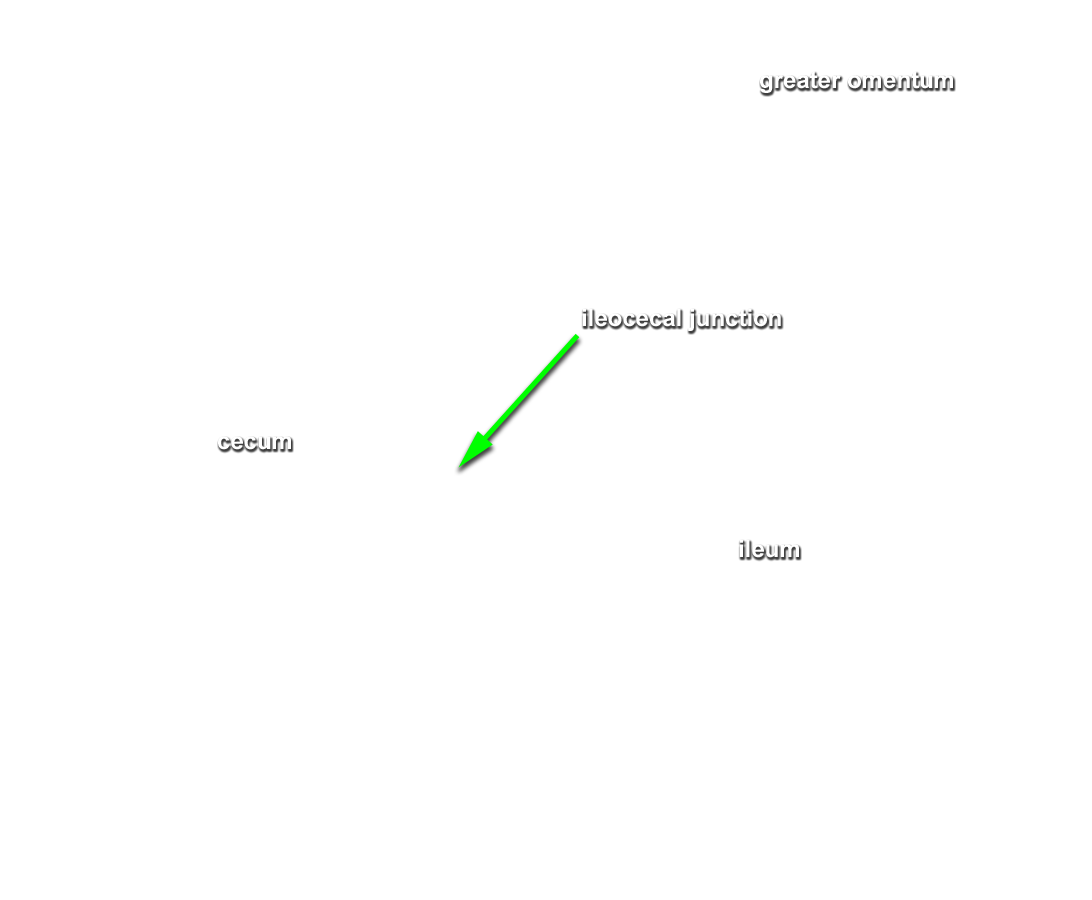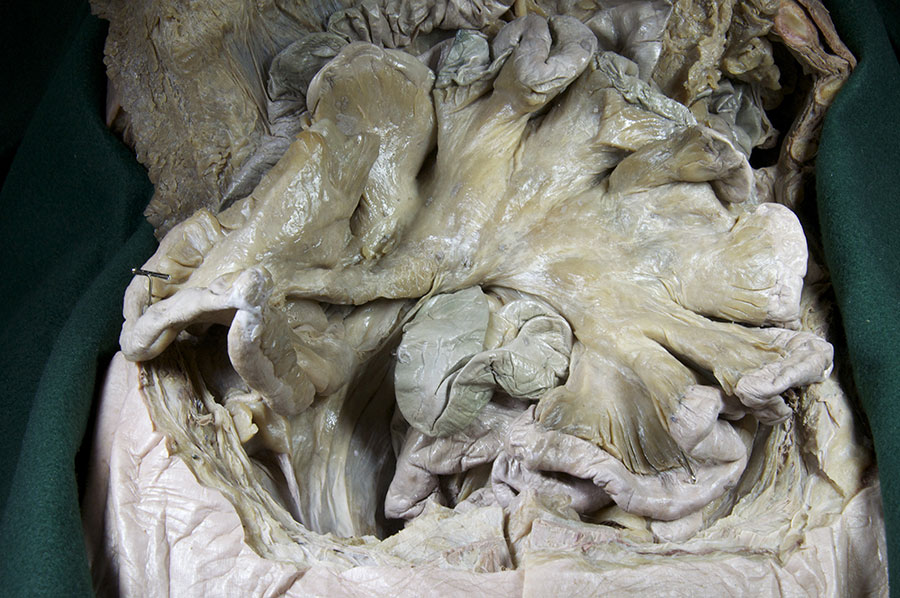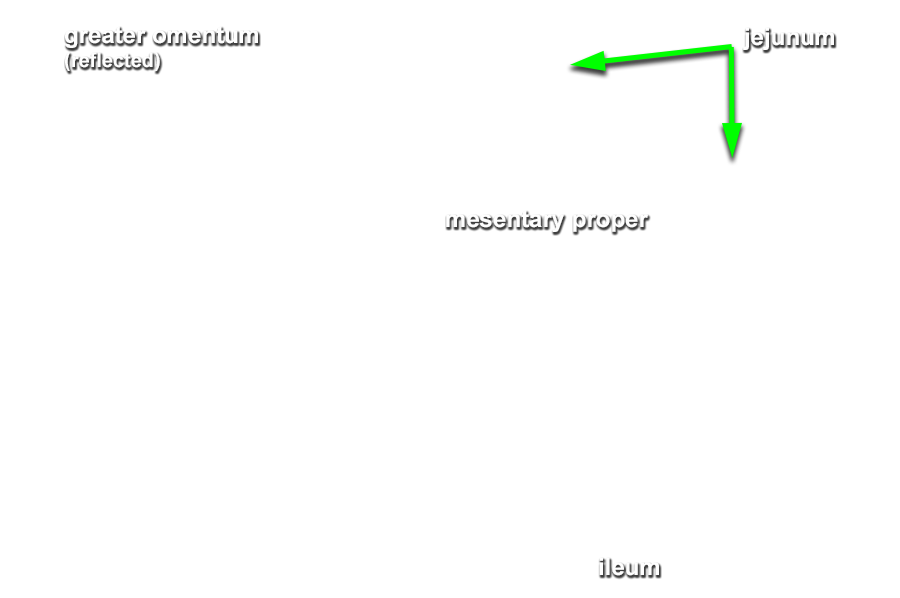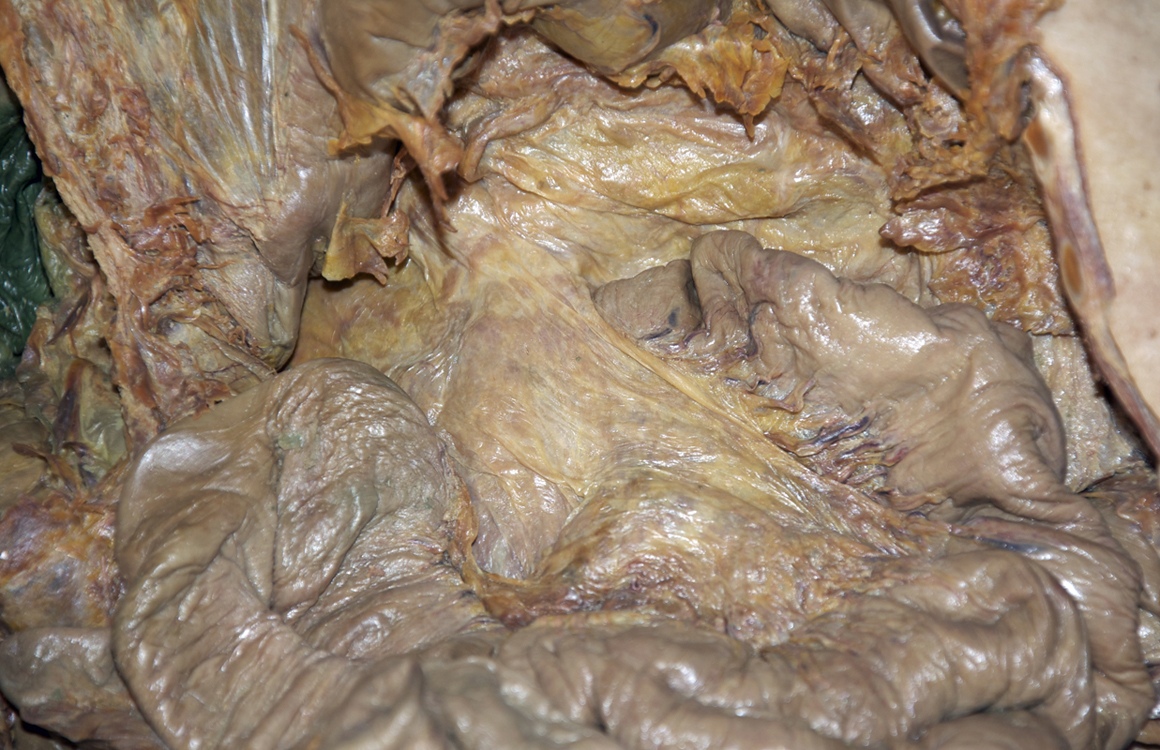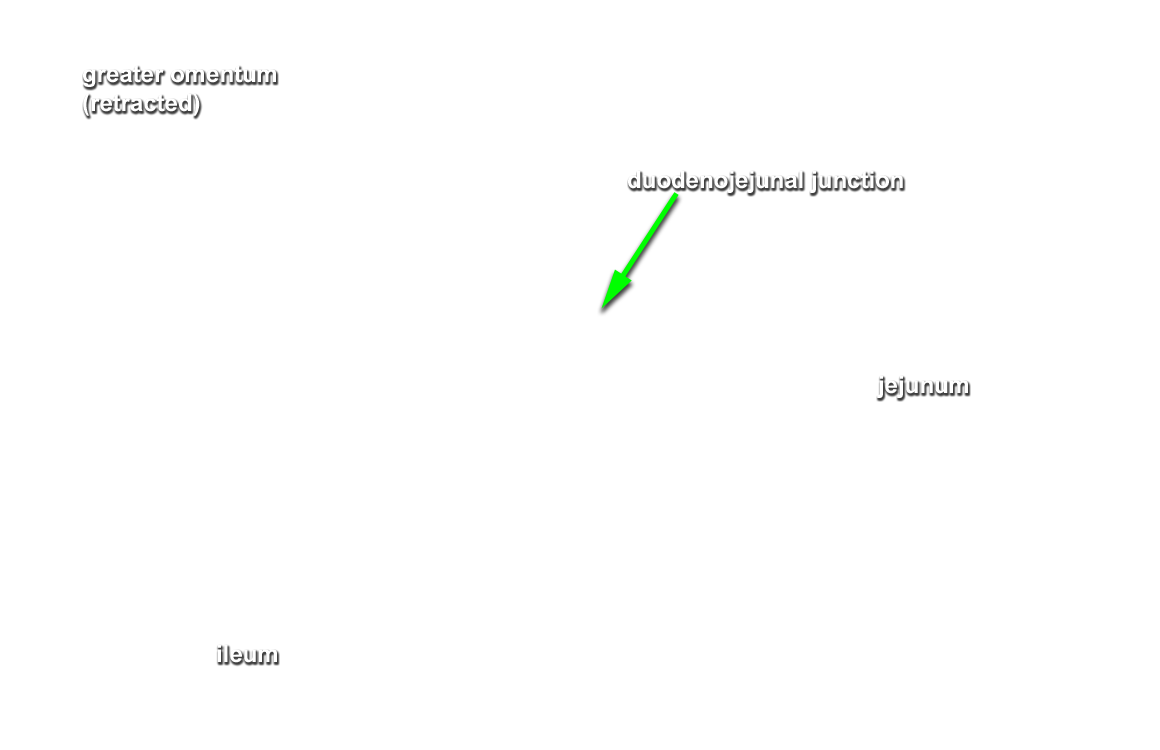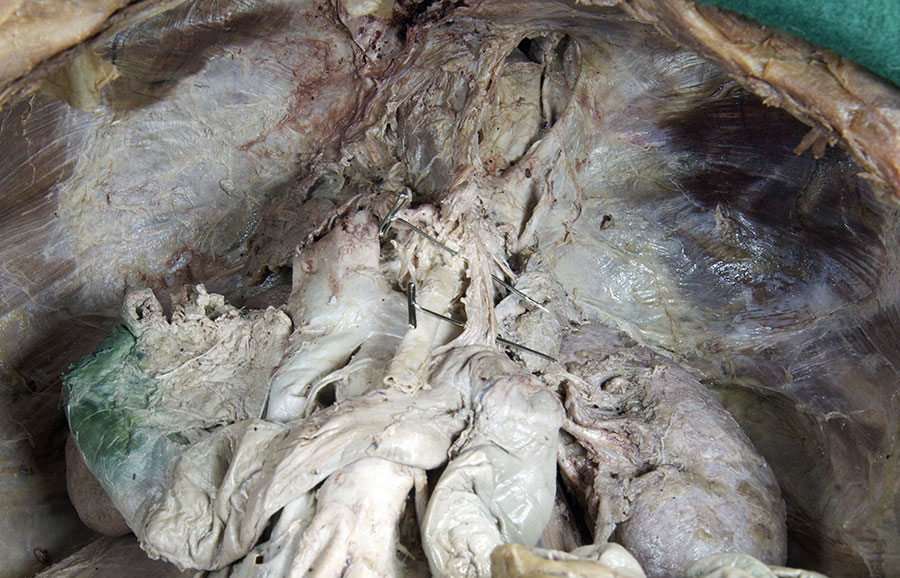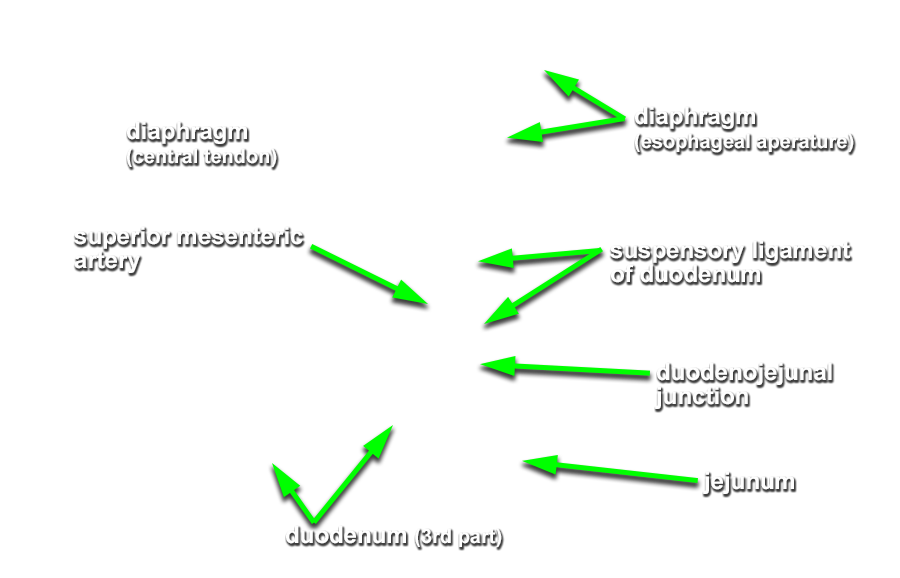Use your hands to explore the peritoneal cavity.
- Reflect the anterior abdominal wall and identify the liver and gallbladder. (G 4.22A;N 263;Gl 15.18) Start with the falciform ligament and trace the reflection of the peritoneum from the liver to the diaphragm. Identify (palpate) the coronary and right and left triangular ligaments. (G 4.50;N 277;Gl 15.22A)
- Identify the esophagus and stomach and its major surface features fundus, body, pylorus, lesser curvature and greater curvature). (G 4.32;N 269;Gl 15.4) Identify the 1st (superior) part of the duodenum. (G 4.37;N 269;Gl 15.8) Identify the lesser omentum and its two subdivisions hepatogastric and hepatoduodenal ligaments) extending from the region of the lesser curvature of the stomach to the liver. (G 4.27A;N 269;Gl 15.4)
- Place your hand in the superior aspect of the upper left quadrant. Identify the spleen. Identify (grasp with your fingers) the fold of peritoneum, gastrosplenic ligament, extending from the stomach to the spleen. (G 4.28A;N 269;Gl 12.12) Extend your fingers posterior to the spleen. Identify (palpate) the splenorenal ligament extending from the spleen to the posterior abdominal wall (left kidney).
- Identify the greater omentum and transverse colon. (G 4.27A;N 263;Gl 14.3C) Trace the transverse colon to the left colic (splenic) flexure not labeled but it is the vertex of the transverse and desceding colons shown in purple). Palpate and identify the phrenicocolic ligament (peritoneal fold) extending from the splenic flexure to the diaphragm. (G 4.28B;N 266;Gl 14.6)
- Continue tracing the colon towards the lower left quadrant of the peritoneal cavity. Identify the descending colon, sigmoid colon and sigmoid mesocolon. (G 4.48;N 276;Gl 15.15)
- Identify the transverse mesocolon, teniae coli, haustra and appendices epiploicae. (G 4.44;N 276;Gl 15.15) Trace the colon towards the lower right quadrant. Identify the right (hepatic) flexure, ascending colon, cecum and appendix.
- Identify the ileum near the ileocecal junction. (G 4.43;N 273;Gl 15.15) Lift the small intestine and identify the mesentery proper (peritoneal fold extending to the posterior abdominal wall). (G 4.41A;N 272;Gl 14.3C) Trace the small intestine to the duodenojejunal junction and identify the jejunum. Attempt to identify the suspensory ligament of the duodenum in the corresponding image.
